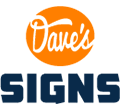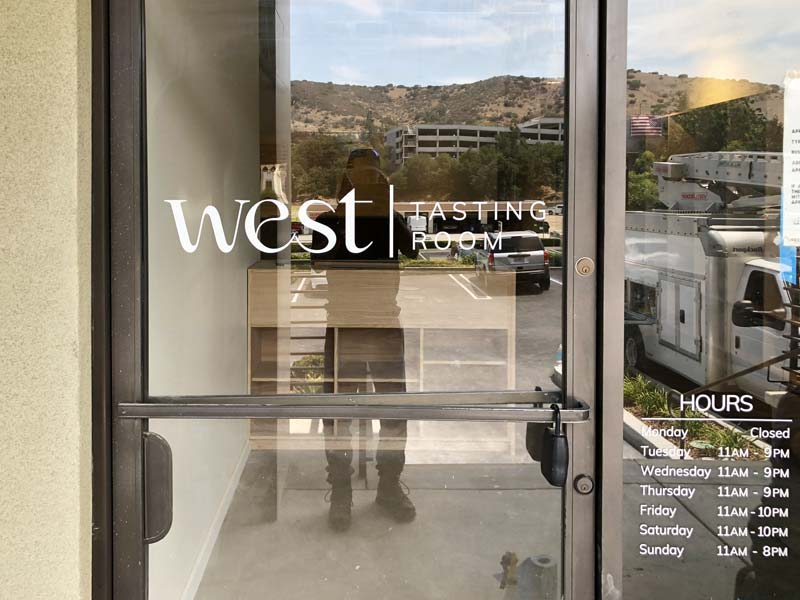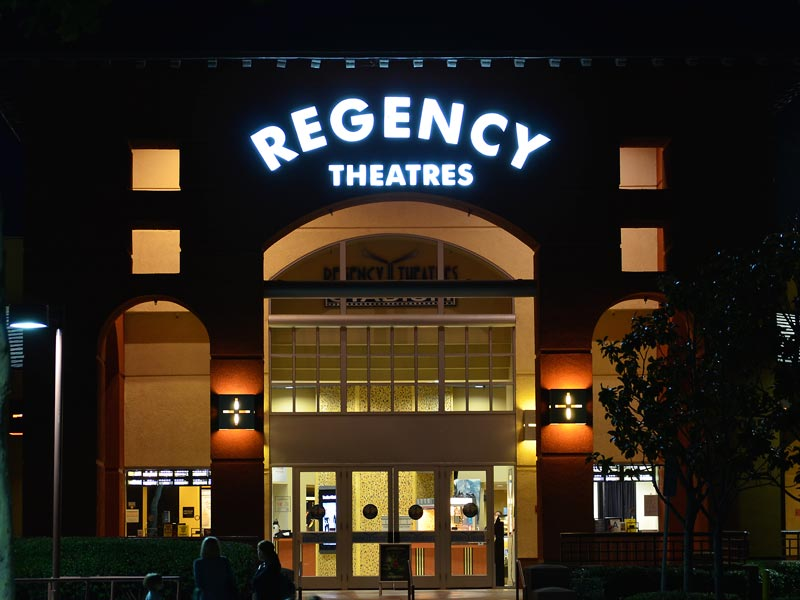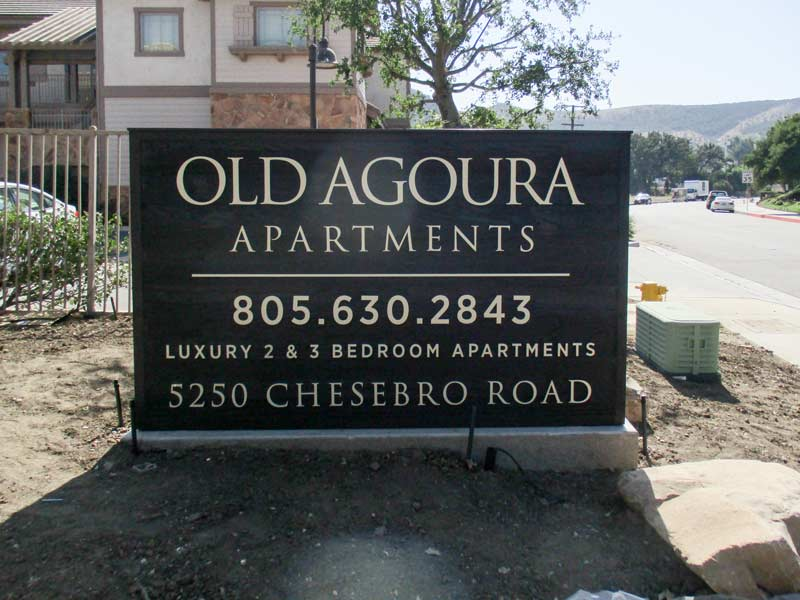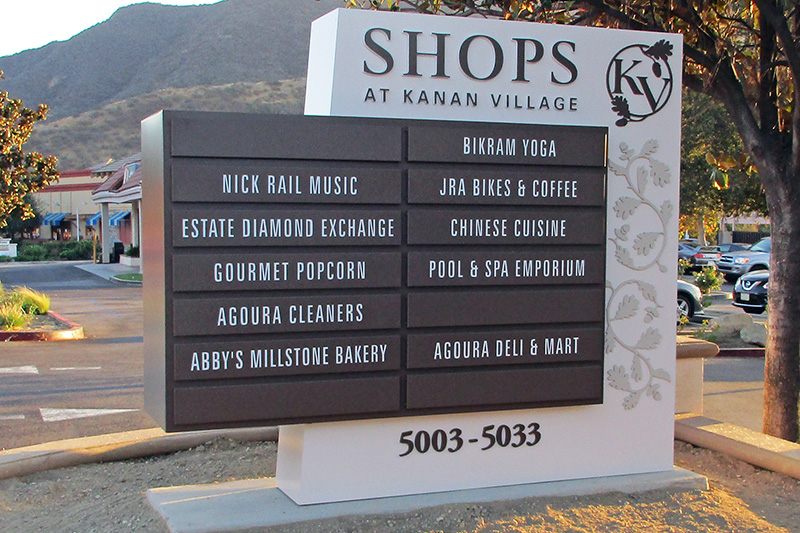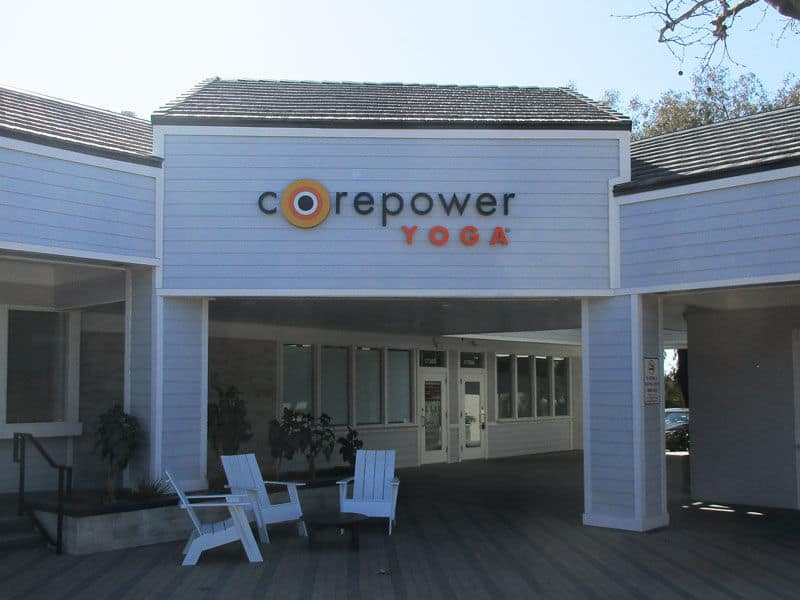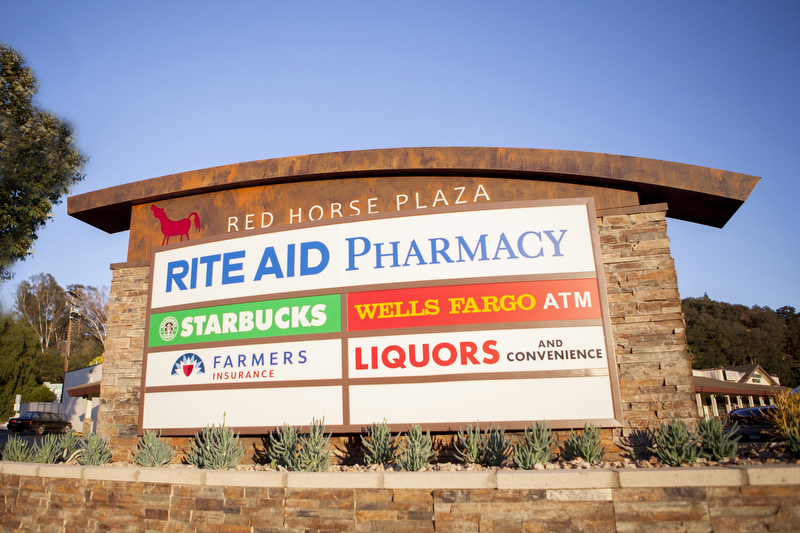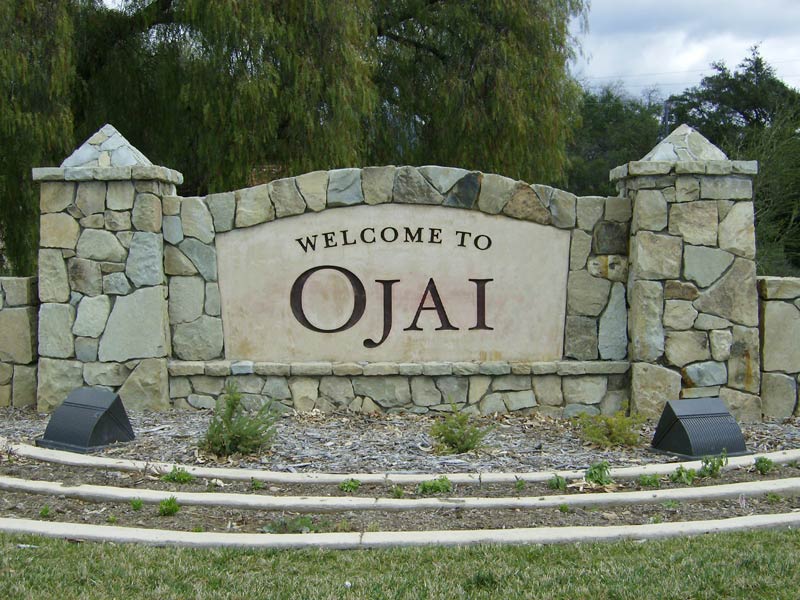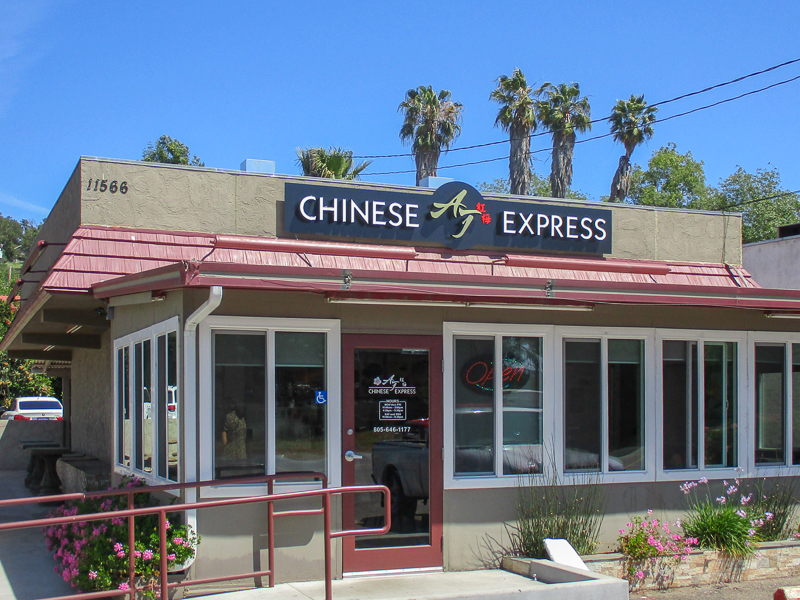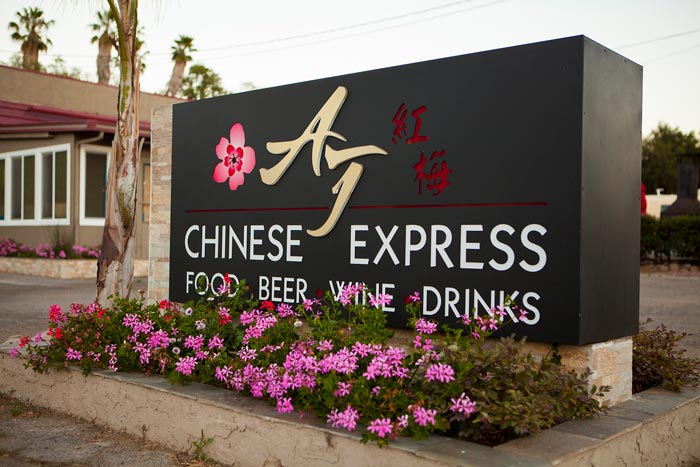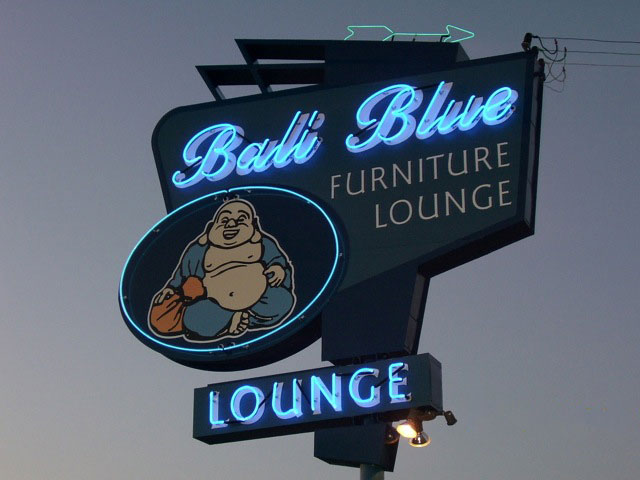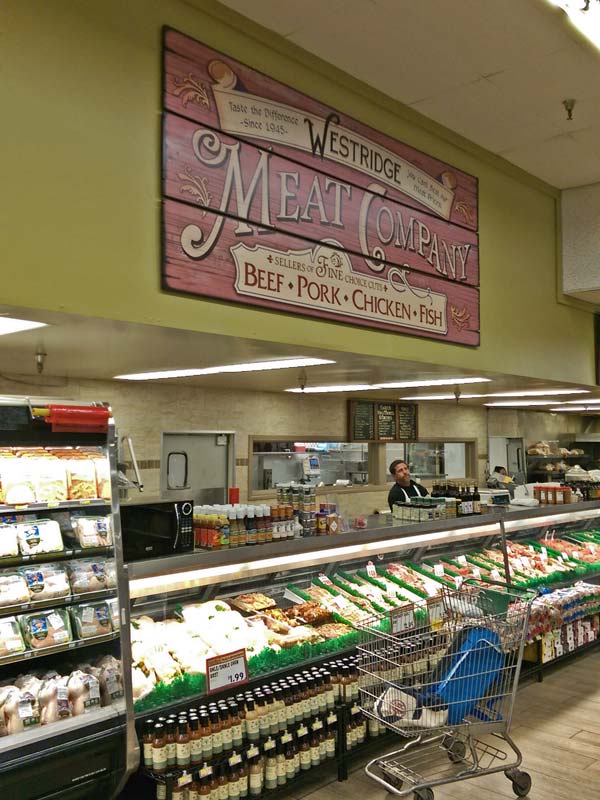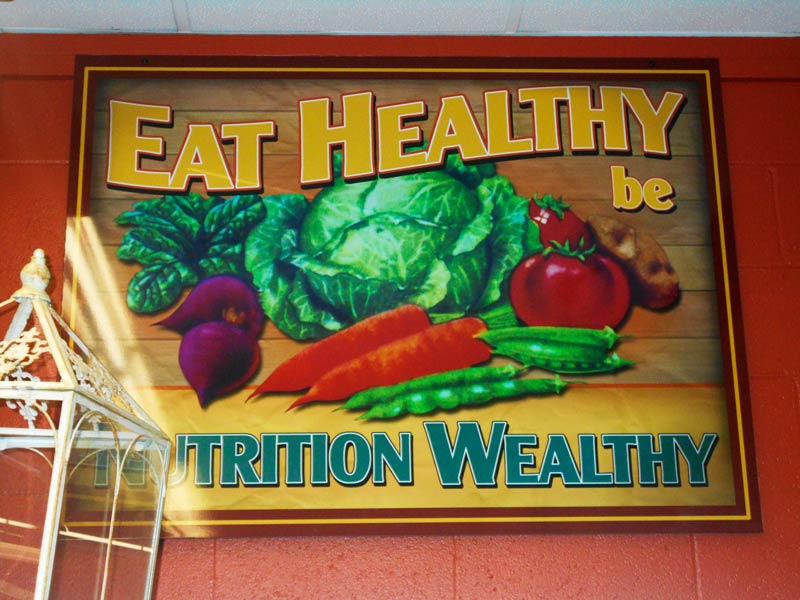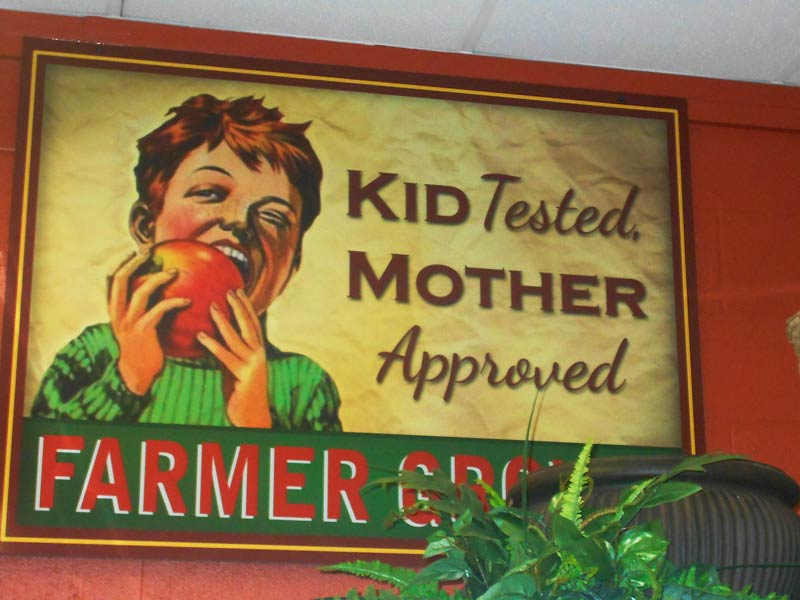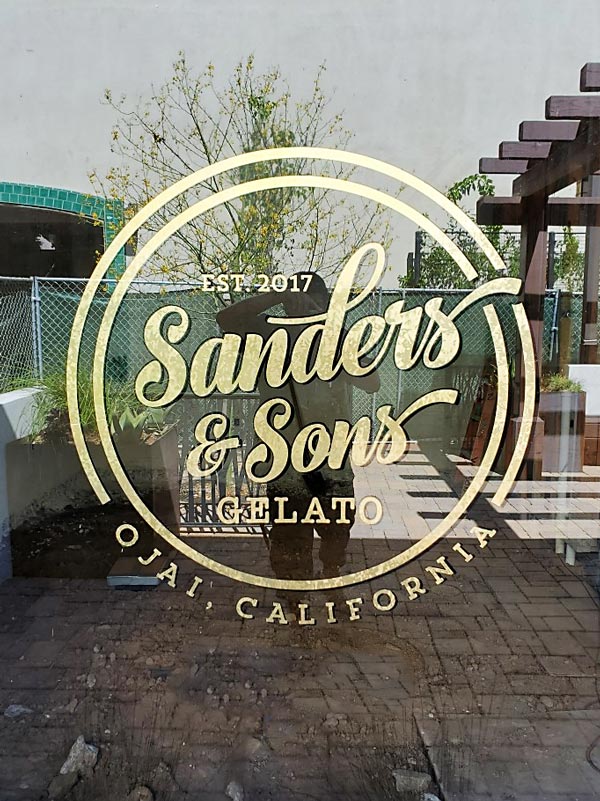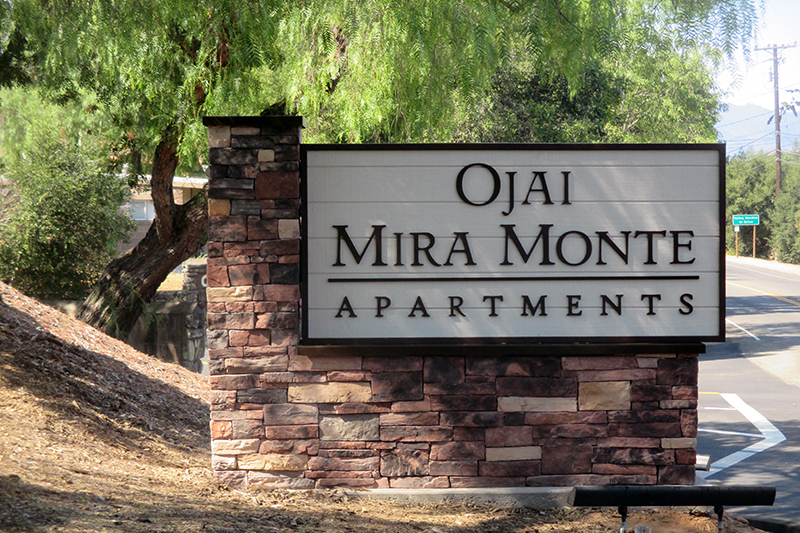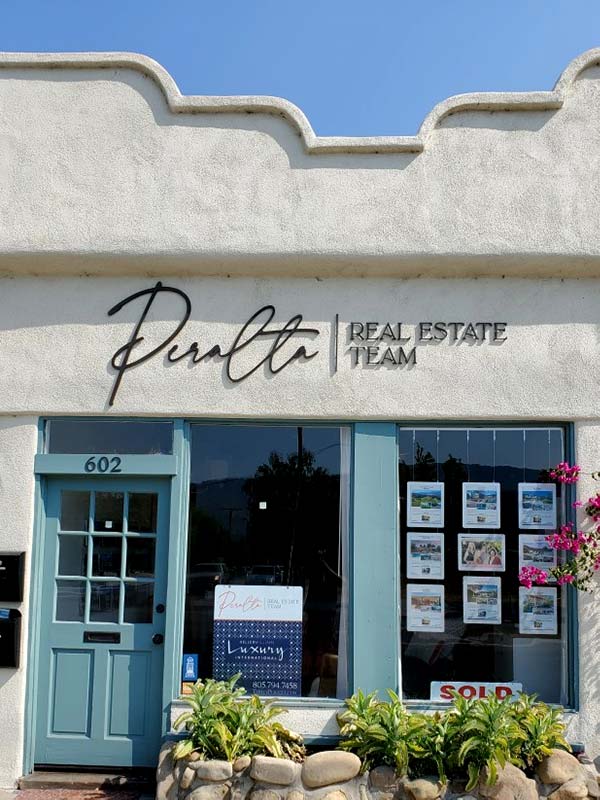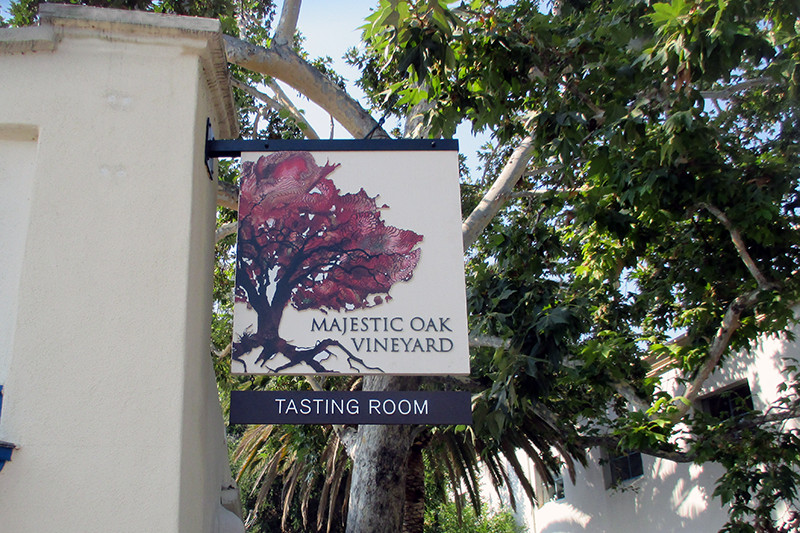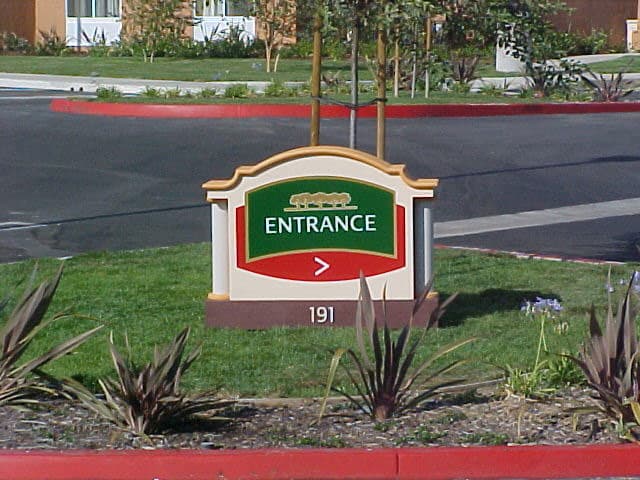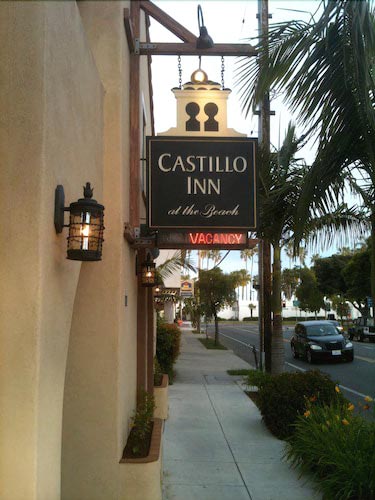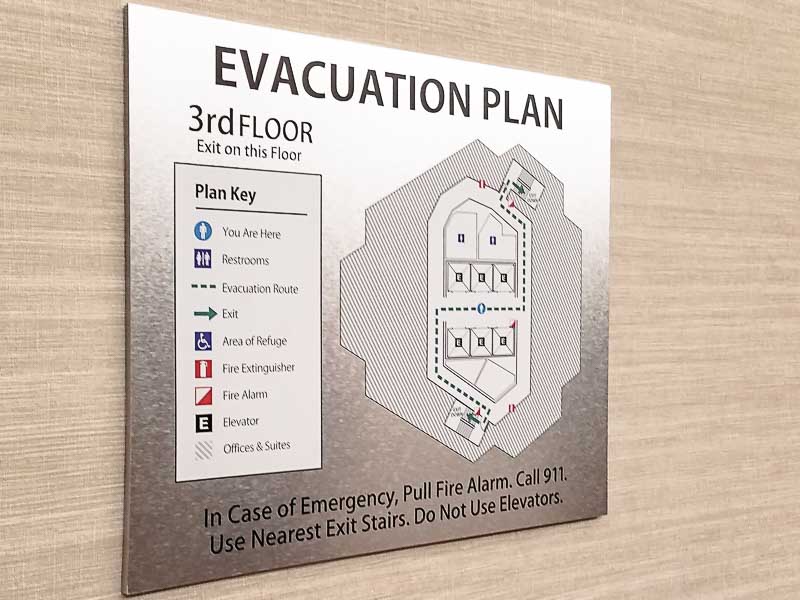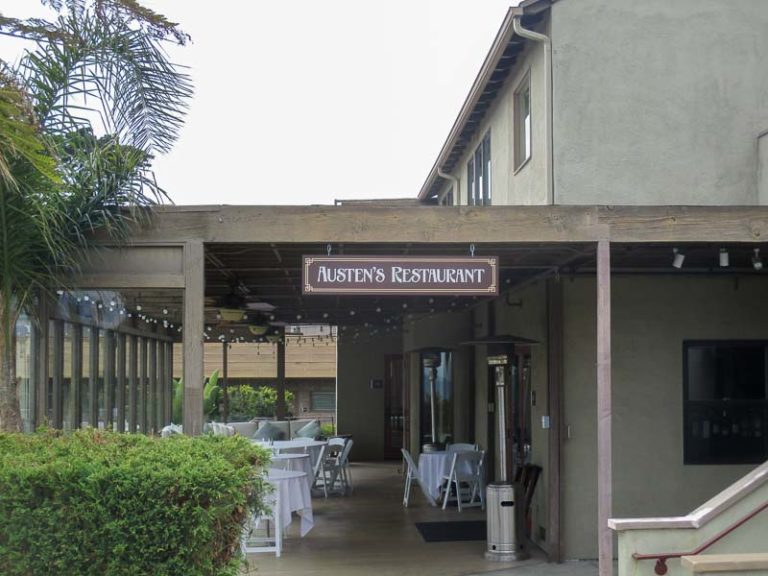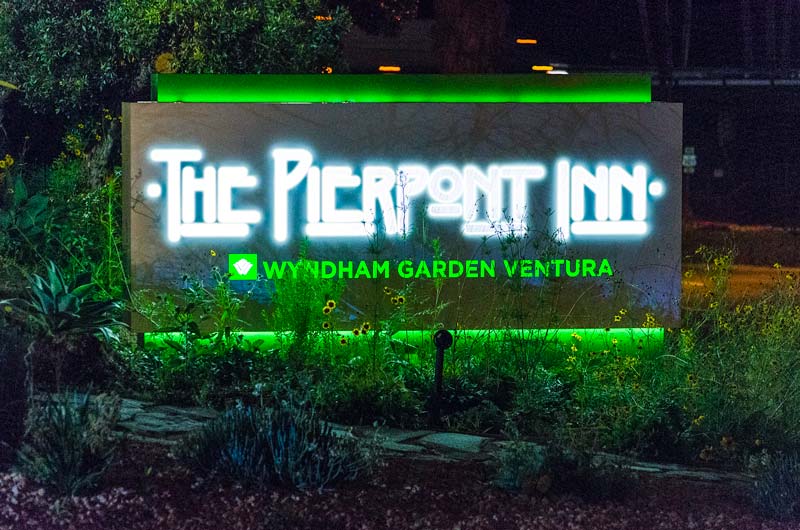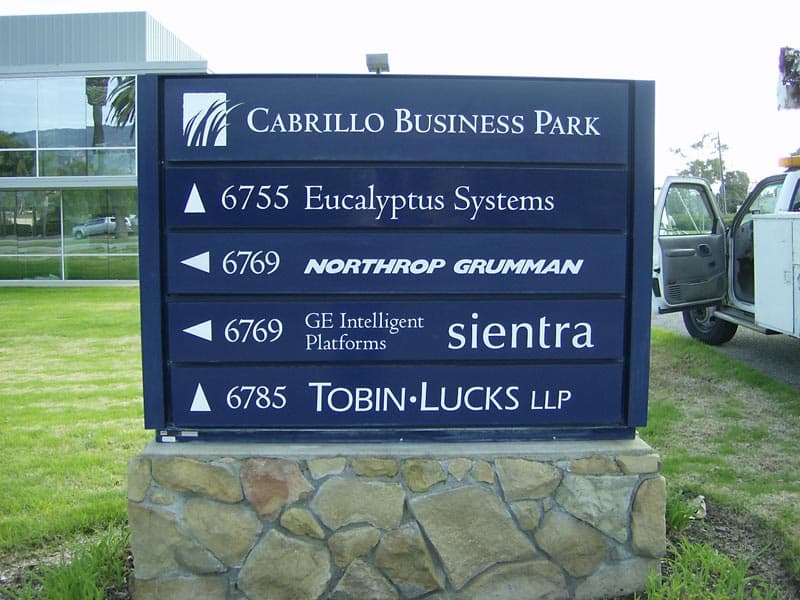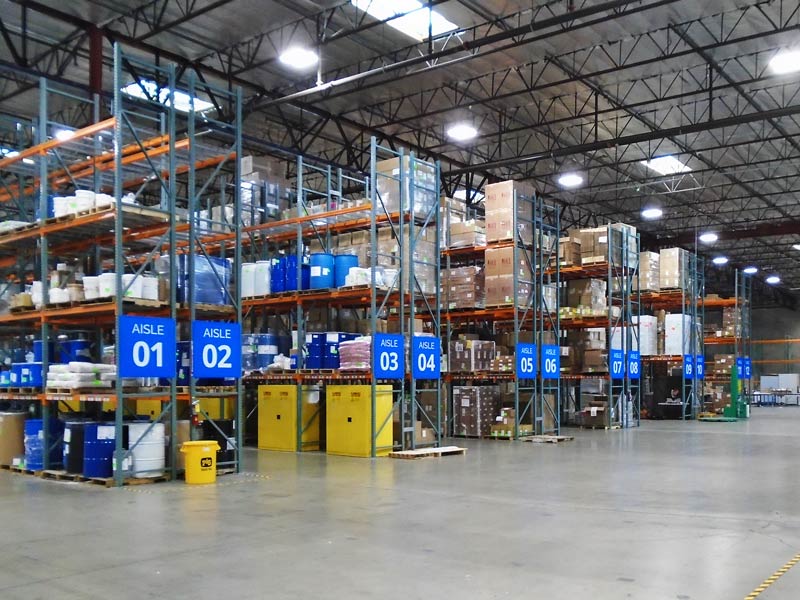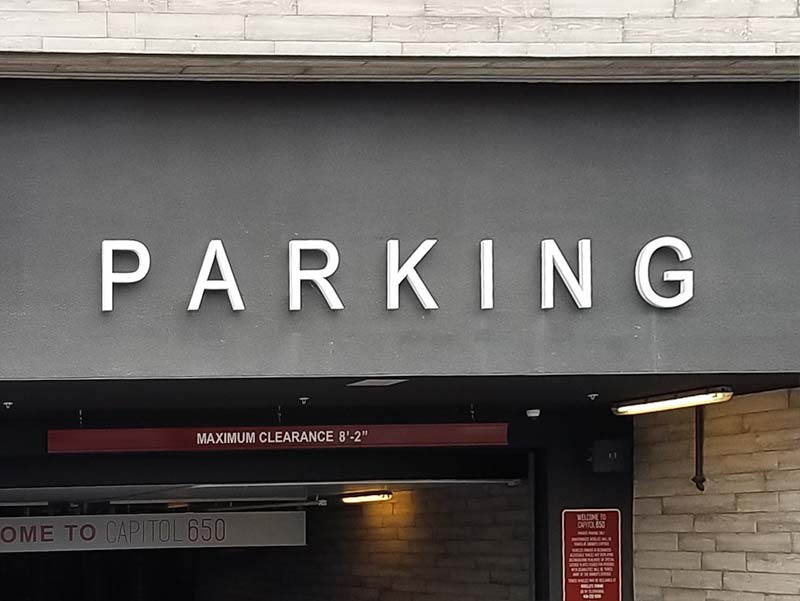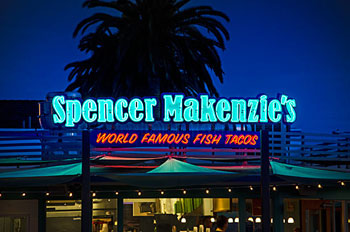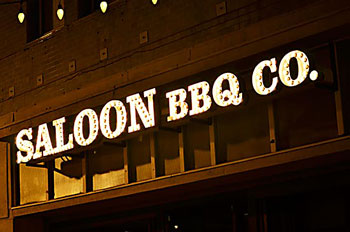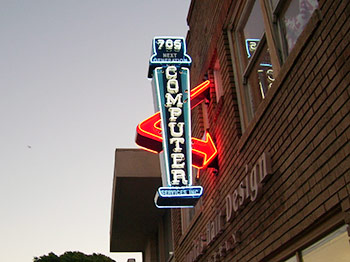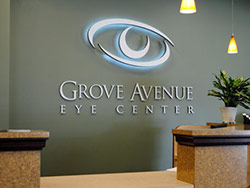Channel Letters 101 – What You Need to Know to Select Yours
Channel letters are an impactful type of sign that has been around since the 1920s. Since then, they’ve functioned as an excellent way to advertise your business and generate more revenue.

Channel letters are easy to spot from a distance, making them perfect for businesses that need large, eye-catching signage. If you want to increase your visibility, channel letters might be your best option.
If you are shopping for channel letter signage, this article will guide you through choosing the right style for your building’s facade.
What are Channel Letters?

Channel letters are three-dimensional, individually fabricated letters or graphics typically used for signage on building exteriors but can also be used indoors.
They’re often made from aluminum for the sides and backs, with acrylic faces, and can include internal lighting (usually LEDs) to illuminate the letters at night.
This sign type is highly visible and can be customized in size, color, and lighting effects to match a brand’s unique look.
Typical channel letters have five main components:
- Face, often made of acrylic (or sometimes metal), is the letter’s front surface that can be illuminated or left opaque.
- Return (sides), these vertical aluminum strips form each letter’s depth or “channel.”
- Back, an aluminum sheet enclosing the letter’s back, supporting internal components.
- Lighting, LED modules (though neon is sometimes used) are usually installed within the channel to illuminate the face or create a halo effect.
- Trim Cap, a border (typically plastic or metal) that attaches the acrylic face to the returns, creating a finished edge.
Where You Typically See Channel Letter Signs

Channel letters are often installed on the building’s facade or higher up when wall space is limited. For instance, in retail areas with minimal room, pole-mounted channel letters stand tall and remain highly visible.
In the example above, we created the two channel letter signs for GANAS Auto. Their storefront sign can attract people passing nearby, and the pole sign can attract motorists from far away.
Other places you commonly see channel letters are on monument signs…

…and indoor signs mounted on walls.

Why Channel Letters?
Building awareness for your brand is essential to your business’s success. In fact, 59% of consumers say they’re more likely to buy new products from brands they already know.
That’s why many grocery stores, retailers, restaurants, office buildings, and apartment complexes choose channel letters—they help boost visibility and recognition.
They’re also a favorite among chains and national brands looking to strengthen brand awareness.
The Five Basic Types of Channel Letters
Channel letters come in five core styles: front-lit, halo-lit, open-face, backlit, and combination.
Each style provides a unique look and illumination level—ranging from bold, brightly lit faces to subtle, halo-like glows.
Understanding these differences helps you pick the channel letters that best match your brand and environment.
Let’s look closely at the five basic types of channel letters:
1. Front-Lit
– The most common style, front-lit channel letters use LED or neon lights to illuminate the face (usually acrylic).
– Because the face materials are highly customizable, you can tailor colors, fonts, and shapes to match any brand.

2. Halo-Lit (Reverse-Lit)
– Ideal for a unique, distinguished look, halo-lit letters shine light from behind each character.
– With opaque faces, they cast a soft glow (or “halo”) on the mounting surface, creating an upscale, sophisticated appearance.

3. Open Face:
– Often featuring aluminum backs and sides, these letters have no front or a clear front, exposing the neon or LED inside.
– This style provides a retro vibe that stands out due to the visible lighting elements.

4. Backlit
– Similar to halo-lit, backlit letters illuminate from behind, creating a halo effect around each letter.
– The result is a subtle glow that highlights the letters’ shapes, adding depth and a modern flair.

5. Combination:
– Blending front-lit and halo-lit styles, combination letters can illuminate both the letter face and cast a glow behind.
– This dual effect can be striking—for instance, a red-lit face with a white halo ensures maximum visual impact.

The subtle distinction between Backlit and Halo-lit channel letters
In many cases, the terms “backlit” and “halo-lit” are used interchangeably, since both involve light shining from behind the letter rather than through the face.
However, there is often a subtle distinction:
– Halo-Lit (Reverse-Lit) Channel Letters typically have an opaque (often metal) face and open backs so the LEDs shine onto the wall, creating a glow or “halo” around each letter.
– Backlit Channel Letters can be similar in construction, but the focus is on illuminating behind the letters (sometimes with partially translucent materials), so the glow may appear differently or be more diffused than a classic “halo” effect.
In essence, both styles illuminate from behind, but “halo-lit” usually emphasizes a pronounced outline around each character, while “backlit” can offer variations in how the rear glow is displayed.
Construction and Materials
When it comes to constructing channel letter signs, the choice of materials plays a pivotal role in determining their appearance, durability, and overall effectiveness.

The most commonly used materials include aluminum, acrylic, and in some cases polycarbonate, each offering unique benefits to suit different sign projects.
- Aluminum: Known for its durability and corrosion resistance, aluminum is a popular choice for channel letter signs. It’s not only affordable but also versatile, as it can be anodized or painted to match any desired color and finish. Aluminum letters are robust and can withstand various weather conditions, making them ideal for outdoor signage.
- Acrylic: Acrylic letters are another excellent option, especially for illuminated channel letters. This material is highly versatile and can be molded into complex shapes and designs. Acrylic letters can be painted or printed with custom logos and graphics, providing a sleek and modern look. They are suitable for both illuminated and non-illuminated signs, offering flexibility in design.
- Polycarbonate: In some cases, polycarbonate may be used instead of acrylic for extra impact resistance, especially in high-traffic or vandal-prone areas. These plastic letters can be molded into various shapes, designs and can also be painted or printed with custom logos and graphics. They are lightweight and easy to install, making them another choice for sign projects.
In addition to the materials used for the letters, the construction of channel letter signs involves selecting the appropriate mounting surface and ensuring proper electrical connections.
Depending on the installation requirements, the mounting surface can be flush, raceway, backer, or a combination.
To achieve a professional and safe installation, it’s crucial to work with sign experts, like Dave’s Signs, who have extensive experience with channel letter signs.
We can help you choose the right materials, design a custom installation pattern, and ensure your sign is securely and safely mounted.
Mounting Options for Channel Letter Signs
When purchasing channel letter signage, we can help you decide the type of mount you need. Channel letters have four main mounting options: the flush mount, raceway mount, backer mount, and combination.

- Flush (Direct) Mount: This mount is the most common. And it gets its name because the letters mount directly to the building’s face. Housing for the power source and electrical wiring is behind the bulkhead wall with this option. For back-lit letters, separation from the surface comes from standoff spacers.
- Raceway Mount: Many property managers often request that channel letters be mounted atop a raceway. Raceways are containers that neatly and safely holds the electrical components (wires, power supply, etc.) for the individual letters. A raceway also alleviates the # of holes drilled, too. We typically paint raceways so they match the hue of the sign band or storefront. This technique also ensures that it blends well with brand guidelines and the surrounding architecture.
- Backer Mount: This mount is more common for illuminated channel letters. This option sees the channel letters attached through a pre-made opening in the building’s frontage or mounted atop the backer board. The electrical hardware and power supply are contained within the backer cabinet or situated behind the facade or bulkhead wall.
- Combination or Custom Mount: Sometimes a sign project requires blending different mounting methods to accommodate specific design preferences or structural constraints. For example, channel letters might sit on a small raceway that’s then fixed to a backer panel. This hybrid approach provides extra flexibility, allowing you to maintain a secure installation while achieving the desired aesthetic.
Next Steps for Getting Your Backlit Channel Letters
There you go. Now you know the basics of channel letter signage. The next step we recommend is consulting with a custom sign professional like Dave’s Signs to help you bring your vision to life.

We have experts on staff who can create commercial signage for your business that will help you stand out from all the rest. Since 1992, we have been the top choice for designing, fabricating, and installing distinctive signs and graphics for small mom-and-pop stores to nationwide accounts. No job is too big or too small.
Why Choose Dave’s Signs for Your Halo Channel Letter Signs?
Dave’s Signs serves clients here in Ventura, Santa Barbara, Los Angeles Counties and Nationwide. We know all the local zoning ordinances that regulate the size, illumination, location, materials, and design of channel letter signs for permits and approvals. We also have extensive experience meeting landlord’s and property management requirements for signage.

Still have questions about channel letter signs? or other high-quality signs and services we offer? Call us at (805) 641-1387 or Request a Quote online. We’re always happy to help and answer any questions you may have.
